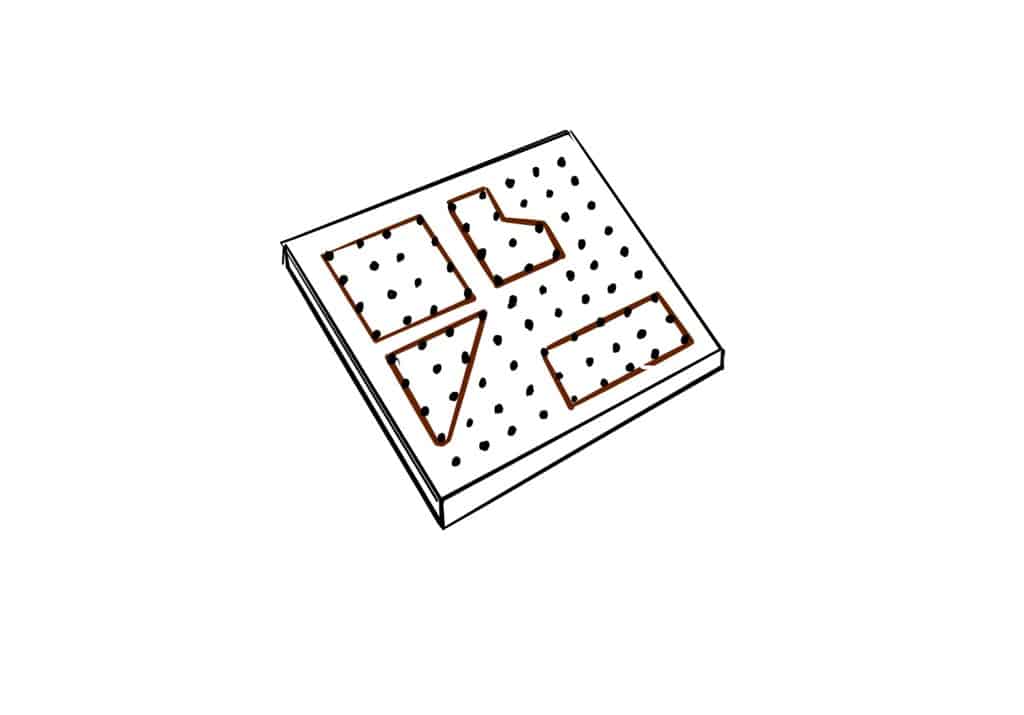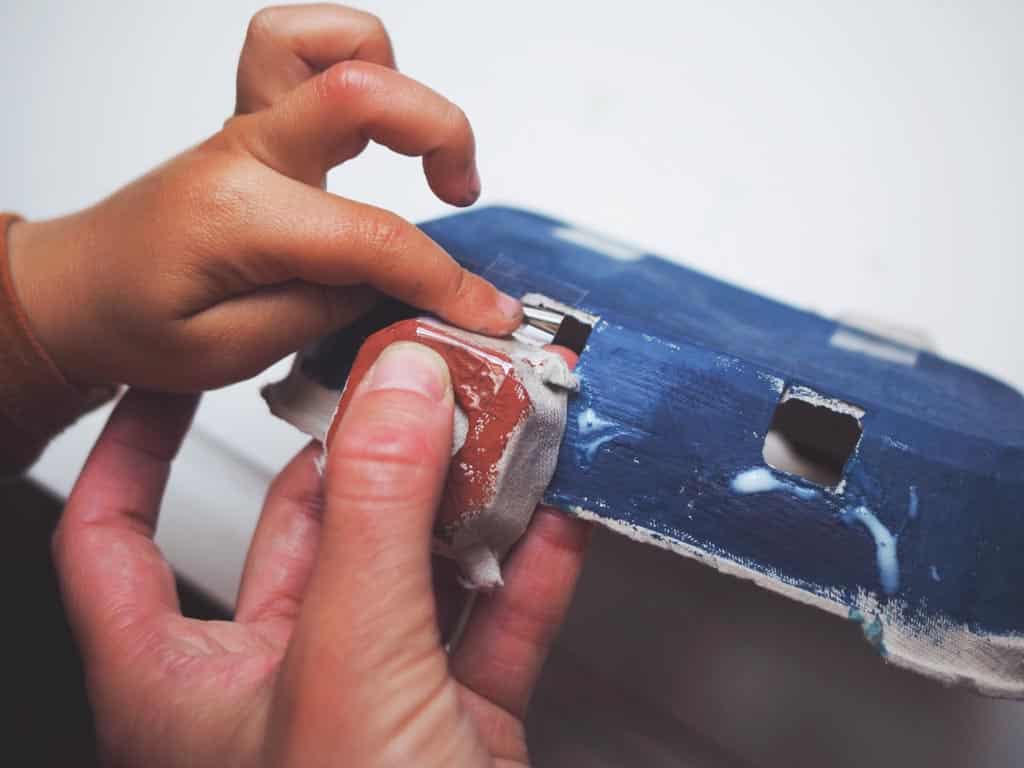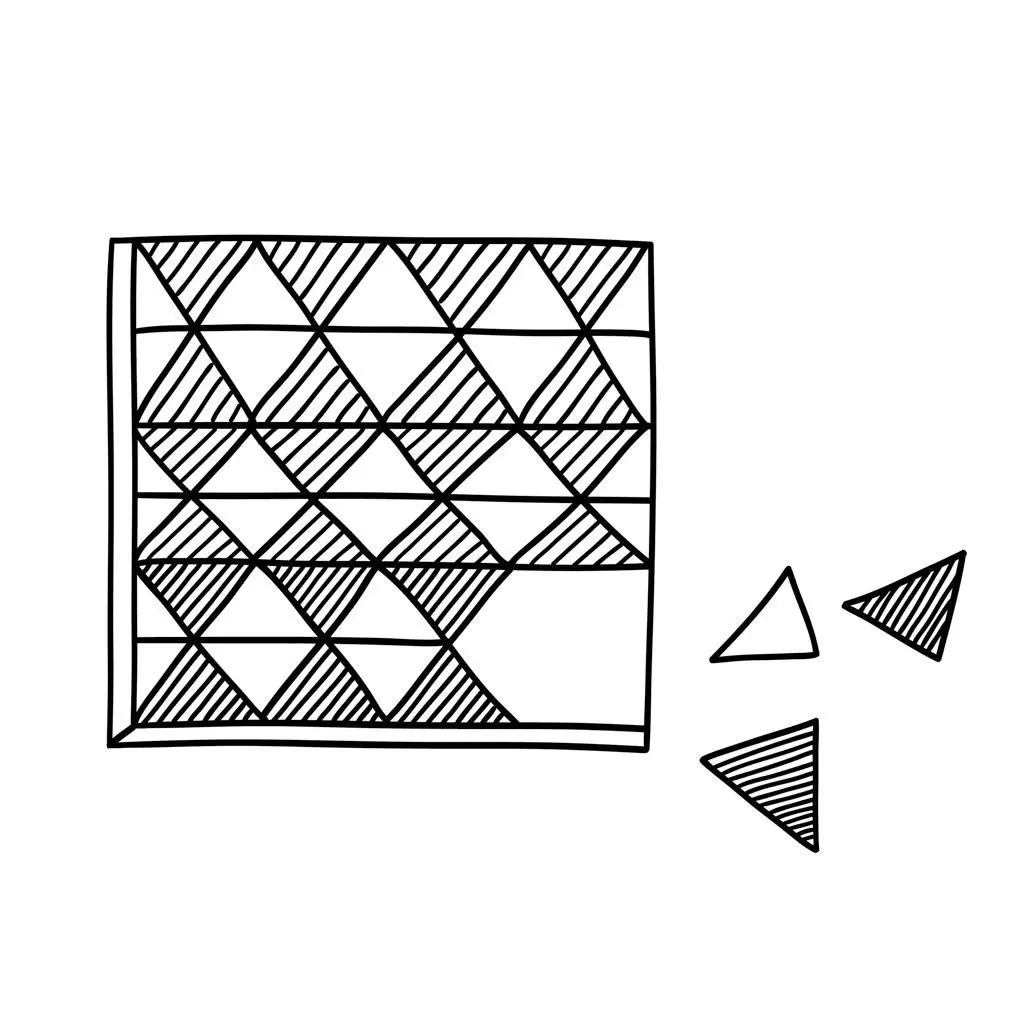Geoboard activities for preschoolers provide engaging methods to gain early math skills, spatial awareness, fine motor skills, and coordination. If you want to offer endless opportunities for open-ended play that help increase your children’s potential for academic achievement, then check out these geoboard activities for preschoolers.
What Is a Geoboard?
When you’re looking for math manipulatives that can engross young minds, geoboards rank high on the list. A versatile manipulative for math, motor skills, and coordination, geoboard activities for preschoolers involve using elastic bands to secure around pegs that are fixed on a board.
The pegs of a geoboard come fixed in columns and rows with an equal distance between each peg. With geoboard activities for preschoolers, your children use elastic bands (bonus points if you use bands with different colors) to stretch around the pegs in different shapes, allowing them to visualize math concepts, make patterns, and form shapes.
Why Are Geoboards Important?
Geoboard activities for preschoolers offer loads of benefits disguised as creative play for your children. They can be a surprisingly effective tool for teaching math concepts and improving physical mobility in young children.
Different types of triangles, area, and math functions become amazingly clear when using a geoboard to illustrate the concept concretely. Geoboard activities for preschoolers spatially engage them with math in a fun, open-ended way. Experts have discovered that early math skills become a greater predictor of academic achievement than early reading skills.
Geoboard activities for preschoolers also allow them to exercise and build bilateral coordination. Studies have shown that bilateral coordination positively impacts later academic achievement. Bilateral coordination refers to using both sides of the body in an activity, which is an essential element in dressing, movement, eating, and more.
Building the small muscles in your hands develops fine motor skills. Geoboard activities for preschoolers give a fun, practical way to engage and build the small muscles needed for their fine motor skills.
Can I Make My Own Geoboard?
If you don’t have a geoboard, you can easily make one yourself. In fact, you can find our simple geoboard tutorial right here. With just a few basic tools, wood, and screws, you can quickly assemble one to provide geoboard activities for preschoolers so they can gain all the benefits of this educational tool.
Read how to make your own geoboard.
Are Geoboards Appropriate for Preschoolers?
Geoboards can safely be used by very young children, including toddlers and preschoolers. As soon as your children can manipulate an elastic band without putting it in their mouths, they can use a geoboard.
A geoboard offers developmentally appropriate activities to children of all ages. Depending on their ages, some children may simply stretch bands across the pegs while others may make designs and pictures. You may find that older children will use the geoboard to layer designs and explore interesting concepts. A geoboard provides endless possibilities for cognitive play.
Geoboard activities for preschoolers hit a perfect age where exploratory, open-ended play with a geoboard can solidify concepts that might otherwise mystify young children. You can provide engaging activities for your preschooler or allow them to use the geoboard to create pictures, make designs, and explore.
What Can You Learn With a Geoboard?
Geoboards activities for preschoolers give children an opportunity to practice several math skills, especially abstract concepts.
Symmetry
Symmetry can be a difficult concept for children to grasp, although many use it every day. Many children arrange toys, drawings, and even their rooms with symmetry without even realizing it. Geoboards give an opportunity to put a name to the concept of symmetry. You can place a shape on the board and ask them to create an identical shape next to it.
Patterns
You can create geoboard activities with preschoolers that allow them to finish patterns. Depending on their age and ability, you have a variety of options.
You can place different colored elastic bands on the board in a row and ask them to finish the pattern by placing the correct color band on the board. You can increase the difficulty by adding shapes into the pattern as well. So now they have to select a color and put it on the board in the correct shape.
Shapes
You can provide several geoboard activities for preschoolers involving shapes. For young children, allow them to create any shapes they choose, even crazy ones.
You can roll a die and ask them to make a shape with the same amount of sides as the number on the die. Create one big shape and have them put shapes inside the shape. Or see how many triangles they can add to the board. You have endless possibilities with a geoboard, so it’s excellent for creative types.
Adding
A simple way to add with geoboards takes two dice and two different colored elastic bands. Have your children roll the dice and then put a different color of bands on for the number on each die. Allow them to choose how they put the bands on. Just be sure one color corresponds to each of the two dice. Then they can visually see how two numbers add together to create one larger number.
Number Bonds
Number bonds can offer a great way to reinforce the concept of addition. Take out two different colors of four bands each and ask children to see how many ways they can make four.
Pictures
For an activity children will want to try again and again, take out several different colors of bands and allow them to make pictures. Encourage them to stack and overlap bands to add dimension to their pictures.
Final Word
Geoboard activities for preschoolers provide fun, engaging tasks that build fine motor skills, encourage coordination, and offer spatial ways to explore important math concepts. Try geoboard activities with your preschoolers to give them an essential headstart to high academic achievement.





